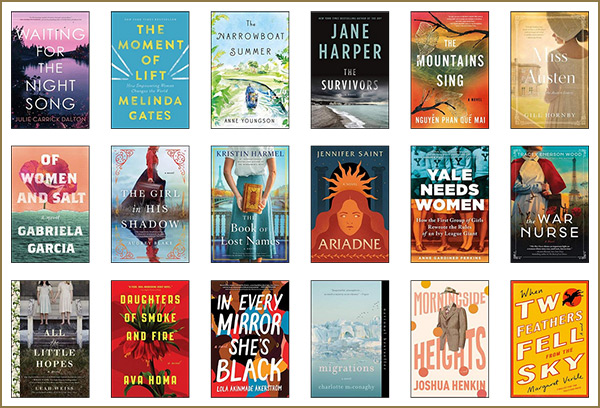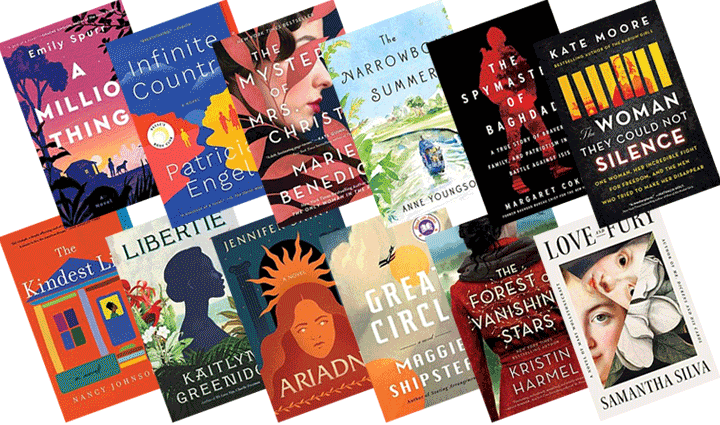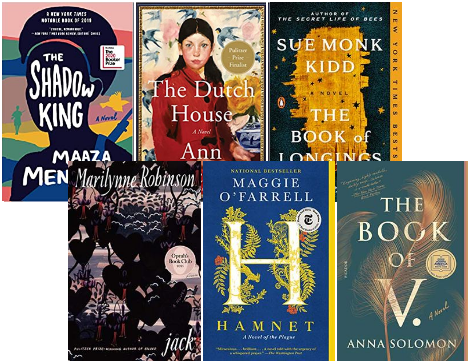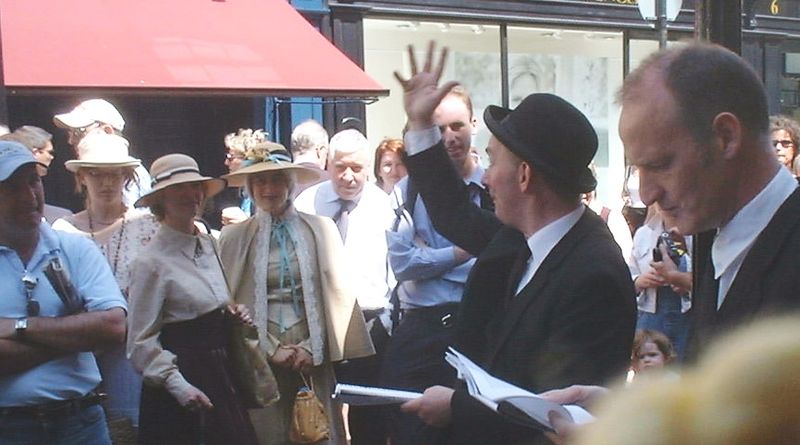 Last week, we introduced you to BookBrowse's Top 20 Books of the Year, as chosen by our subscribers. Now, it's time to announce the award winners. The winners for Best Fiction, Best Nonfiction, Best Debut and Best Young Adult Novel are the books with the highest ratings from subscribers in their respective category.
Last week, we introduced you to BookBrowse's Top 20 Books of the Year, as chosen by our subscribers. Now, it's time to announce the award winners. The winners for Best Fiction, Best Nonfiction, Best Debut and Best Young Adult Novel are the books with the highest ratings from subscribers in their respective category.

Wondering if a book might be right for your book club? Interested in seeing others' thoughts on a book you've read? BookBrowse's Book Club discussions are a great resource for readers who want to gain insight into recently released titles. In 2021, our members exchanged views on 18 different books. Scroll down for clickable images of each of the books.
Perhaps the thing I most enjoy about our book club forum is the quality of the discussion. BookBrowse and the publisher provide initial questions to spark inspired, in-depth conversation and to give participants the opportunity to share their ideas and feelings about the book, and participants also add their own topics to extend the conversation.
Most of these discussions are now closed for new posts, but you can browse them all to find out what people thought of each book and discover which topics generated the most lively exchanges.
 For more than two decades, BookBrowse has published an annual list highlighting the best of year titles according to our subscribers, and what excellent taste they have!
For more than two decades, BookBrowse has published an annual list highlighting the best of year titles according to our subscribers, and what excellent taste they have!
Take a look below to see which books made our Top 20 list for 2021 (books are displayed in publication order).

2021 has proven to be another uncertain and unpredictable year. We hope that you have weathered it well. As you begin to gear up for next year, here is a list of books as a starting point for whatever need your book club is looking to fill, whether learning more about the world, diversion or simply a unique and memorable reading experience. To that end, we have selected a dozen works that we think will be great choices for your book group in 2022. All are already available in hardcover and ebook, and are newly released or soon to be released in paperback.
Our picks this year span debuts, works by established authors, and several different places and periods in history. They feature many people, particularly women and girls, who find themselves in a state of transition, out of place or belonging to multiple places. In A Million Things by Emily Spurr, 10-year-old Rae must fend for herself when her mother disappears. In the The Narrowboat Summer by Anne Youngson, two women who have come to crossroads in their lives take a journey together along the canals of England. In The Kindest Lie by Nancy Johnson, Ruth Tuttle finds she must go backwards before she can move forwards, unearthing a secret that she attempted to leave behind years earlier. Patricia Engel's Infinite Country follows a teenage girl, Talia, whose family is spread across continents, and Love and Fury by Samantha Silva pays tribute to a major early feminist who forged her own path in both life and work, Mary Wollstonecraft.

Historical fiction can be an entertaining tool for learning about days past. It can also be much more. Many novels set in previous periods go beyond a simple rendering of life in a particular time and place in history. For instance, authors may take advantage of the freedom provided by writing outside of their own eras to play with the notion of time itself, or to examine deeper truths about humanity. Books that provide the fun opportunity to reflect on historical details while introducing larger thematic topics often make for great book club selections.
Below are six such books that come highly recommended from our reviewers, with reading guides to spark ideas for discussing them with your book group. Several of these novels employ multiple timelines or cover a longer span of time, and some include connections to well-known people or events but speak from perspectives that have not always been considered historically significant. They all put a unique and valuable spin on the genre.
In anticipation of the publication of Sally Rooney's Beautiful World, Where Are You September 7, we invite you to take a tour of Dublin from a literary perspective with our "beyond the book" article:
 The backdrop of Sally Rooney's Beautiful World, Where Are You is the city of Dublin and its environs. Rooney herself lives in this UNESCO City of Literature, a metropolis that boasts a flourishing literary scene and an impressive inventory of influential authors, poets and playwrights. The streets of the vibrant capital are infused with the presence of its bookish greats, with landmarks never more than a few minutes away.
The backdrop of Sally Rooney's Beautiful World, Where Are You is the city of Dublin and its environs. Rooney herself lives in this UNESCO City of Literature, a metropolis that boasts a flourishing literary scene and an impressive inventory of influential authors, poets and playwrights. The streets of the vibrant capital are infused with the presence of its bookish greats, with landmarks never more than a few minutes away.